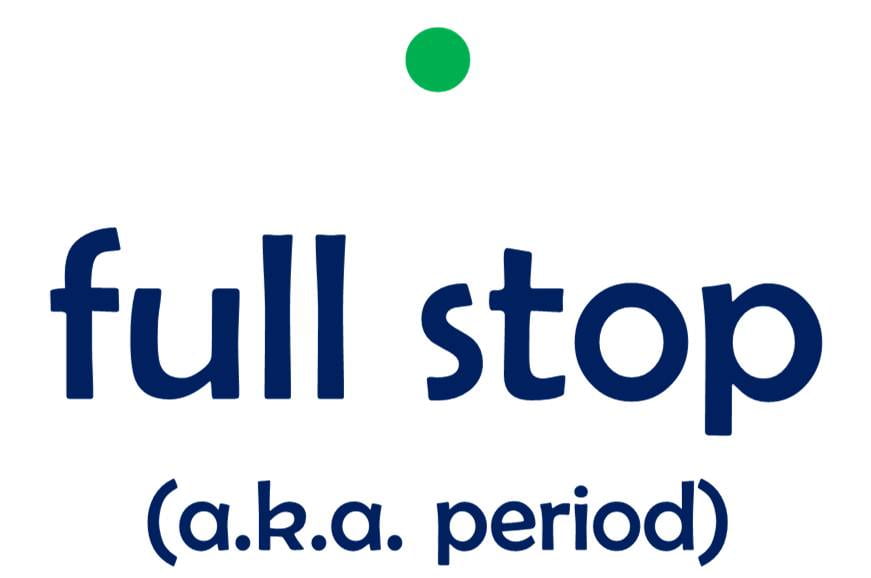Full Stops

A full stop (also know as a period) is most commonly used to indicate the end of a sentence. A period is also used in abreviations where the final letters of a word have been removed. These uses are explained below:
.
1. A full stop is used to indicate the end of a sentence.
A full stop is used at the end of a sentence. It is used to indicate that the sentence is complete. A full stop is the longest possible pause of any punctuation mark; it is where you would pause and take a breath if you were reading a sentence out aloud. Every sentence must begin with a capital letter, and end with a full stop.
.
For example:
Tomorrow would be a good day for racing hamsers.
The book was a lot better than the film.
We went downstairs, out the front door and across the street.
.
.
2. Full stops can be used in acronyms when letters have been left out at the end of an abbreviation.
A full stop can be used when letters have been left out at the end of an abbreviation (such as when ‘et cetera‘ becomes ‘etc.‘ or when ‘United Kingdom‘ beceomes ‘U.K.‘). This was once a very strict rule, but it is now becoming more acceptable to leave out full stops in abbreviations (for example ‘etc’ or ‘UK’). The most important thing is that you are consistent is whether or not you use a full stop in an abbreviation.
.
For example:
U.S.A.
N.A.T.O.
Eg.
It was 5 a.m. when we arrives at the airport.
.
.
Video Demonstration:
.
.
.
Full Stop Worksheets:
-
Full Stops – Making sense with sentences (English Basics 1 Page 22)
-
Full Stops – Capital letters and full stops (English Basics 1 Pages 27-28)
-
Full Stops (Literacy Punctuation Pack)
.
.

Recent Comments